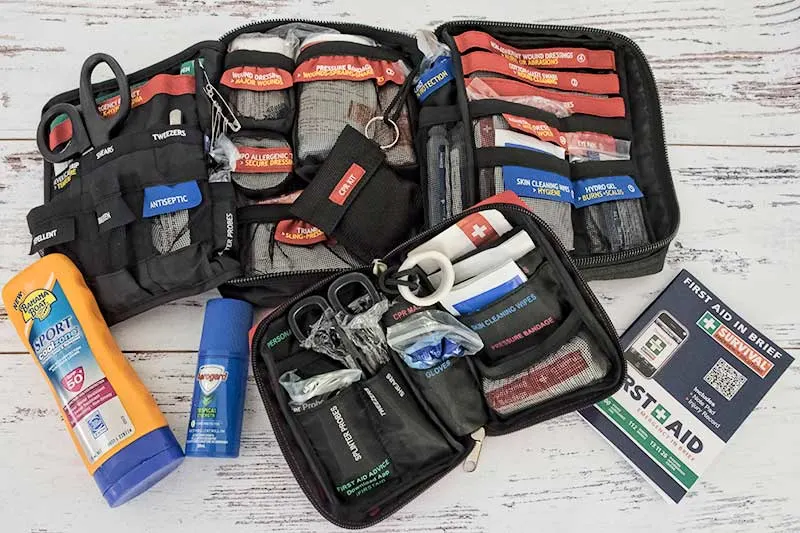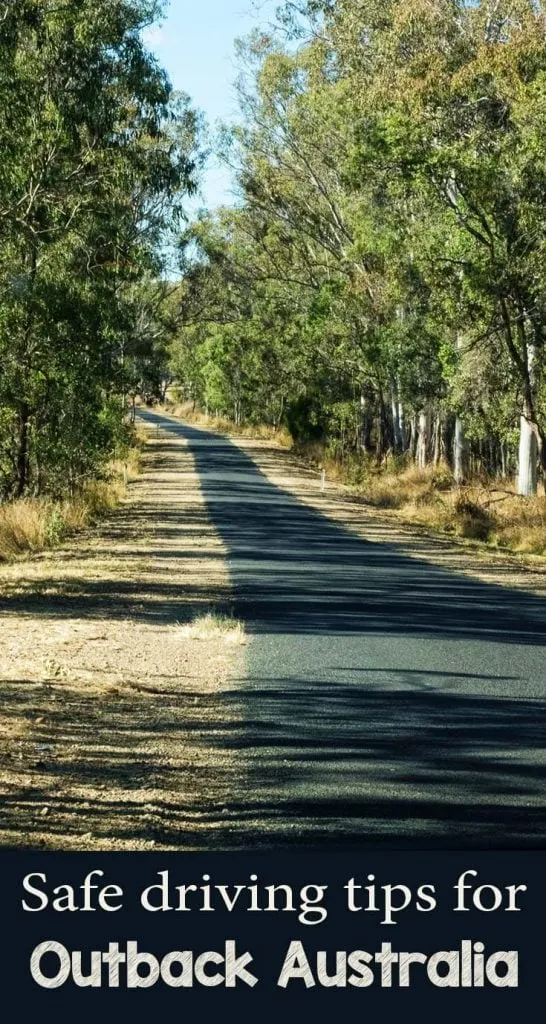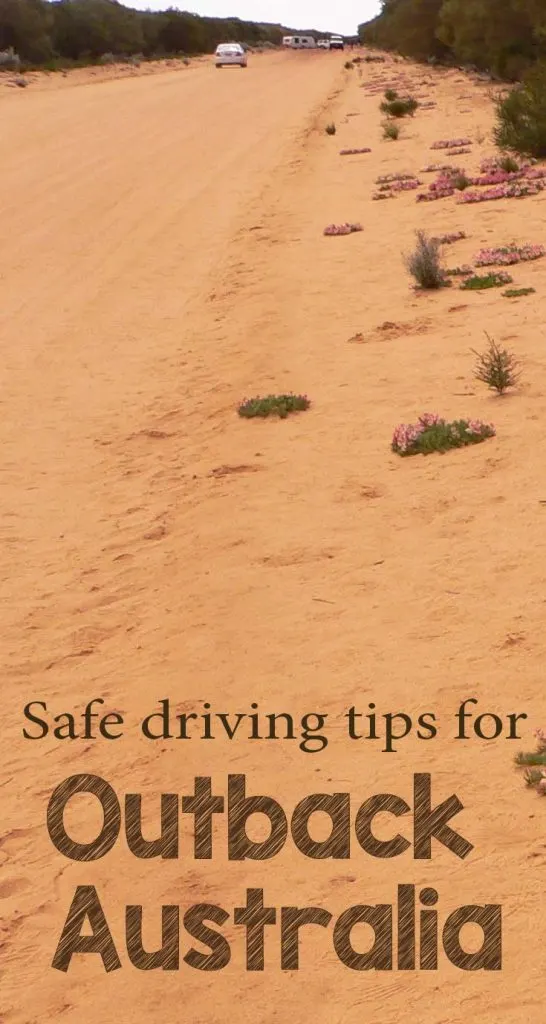Australia is a very large country, some will tell you there’s a whole lot of nothing in between a few good-sized cities and in a way that can be true. It’s certainly remote in places but then a whole lot of the best stuff is out there in that remoteness. That’s why you need to know a few essential tips for safely driving in outback Australia before heading out.

One of the best ways to really see Australia is the good old fashioned road trip. Whether you have a day on the weekend to head out and explore or a year of freedom to see the country, a road trip is almost always the best choice.
Driving in Australia has some unique challenges. Once off that main coastal band, and even some parts along it, there are going to be very few people. Your challenge isn’t the other drivers out there, it’s being self-sufficient if you do run into problems.
There are places you may drive 300 km between petrol stations, not the 3km most of us are used to on our daily commute. There are certainly some roads where no other vehicles are likely to come by for a few hours or even a few days.
10 tips to drive Australia safely in outback & remote areas
1. Maintain your vehicle
Make sure your vehicle is up to the challenge. Some will tell you an off-road vehicle is essential for driving anywhere in Australia but it does depend on where you’re going. A substantial part can be navigated in a standard car if you’re staying on the main highways, taking selective side trips and travelling in the dry season.
Whatever you choose to drive it’s worth making sure its servicing is up to date and the tyres are good. A pre-departure tyre pressure, water and oil level check is always good practice.

2. Fuel up when you can
It can be a long way between fuel stops so gas up when you have the chance. It’s true that fuel is a bit more expensive outside of the main centres but don’t drive on past looking for a cheaper one. You’re going to feel a lot less stupid having paid a few extra cents a litre than having running out of fuel 40km past the fuel station with no idea how far away the next one is.
3. Food and water
Carry a good supply of fresh drinking water in the vehicle and enough food in case you hit delays or breakdown along the way.
4. Natural hazard
Extreme weather conditions in Australia mean that flooding, bush fires and cyclones can occur with minimal warning. If a road is closed it’s for a good reason, don’t drive past the warning signs. Stay aware of weather reports and check for road closures.
Extreme weather is also hard on the road surfaces, roads may be unsealed or only partially sealed, deep potholes may form, they are likely to be slippery in the wet and dusty to a degree that obscures visibility in the dry. Adjust your speed to the conditions and use your headlights in poor visibility, it won’t help you see much better but does give an early warning to oncoming traffic.
Many outback roads are flat, straight and run directly east / west. That means they can be particularly dangerous with sun strike at dawn and dusk. Avoid driving during those periods when you can and if you don’t have a choice then slow down. Australia is well known for its wildlife and many of these animals are also more active at these times and can appear suddenly in the middle of the road.
5. First aid kit and medications
A well-stocked first aid kit is a must for in the vehicle and we usually also have a mini kit that lives in the daypack that comes with us hiking. Once out in the bush or on the back roads, you need to be self-sufficient so don’t just carry the kit, know the basics for using it. We have a detailed post on what to include in your first aid kit and a review of our survival first aid kit linked here.

6. Emergency kit
You should also have a basic emergency kit for your vehicle. While most of us don’t understand what happens under the hood of a modern vehicle with all the computerised bits now there are still some basics that are worth carrying.
- At least one spare wheel that’s been checked and is in good condition
- A jack, brace, spanners and screwdrivers
- A tow rope and jump leads
- A fire extinguisher
- Tarpaulin
- Torch, batteries, lighter or matches
7. Leave details of your travel plans
Make sure you have someone who knows where you are heading and when you expect to arrive. If you’re travelling through really remote areas have a contact plan with someone who can raise the alarm if you don’t check in within the agreed margin and has some idea the route you were taking. Somewhere in Western Australia is NOT helpful information for rescue services.
8. Stop, revive, survive
Be aware of the signs of fatigue while driving. Take a short break or swap drivers every two hours on the road. Some of the warning signs to watch out for are:
- Yawning
- Slower reactions than usual
- Over steering or swerving
- Dry and sore eyes
- Lack of concentration
- Daydreaming
Stretching your legs and a cup of coffee will work to some degree for most people but not for everyone. They aren’t a substitute for sleep. Remember to plan for a proper break on a longer drive especially if you’re travelling alone.
9. In case of a breakdown
If you suffer an accident or breakdown in a remote area try to get your vehicle safely clear of the road without obscuring it from passing traffic. If you have an emergency reflector put it out so it’s clear you’re in need of assistance. It’s common sense but stay out of the sun, conserve energy and resources.
In townships your mobile phone may work, in between quite possibly, it won’t. Unless you’ve just passed a town or homestead the universal advice is to stay with your vehicle. Even if you believe no one is going to miss you for a day or two you have protection from the elements and more water and equipment than you could carry. Someone is more likely to pass by the road than if you’re taking a shortcut through a field and it’s much easier for a search team to locate. Sadly people have died not following this advice.
10. If you’re unsure, ask
Aussies in general are friendly and helpful. Take a few minutes to chat with people when you pass through towns or at rest stops along the way. If you’re unsure of the road conditions ahead, just ask.
Even an hour or two inland from the coast can have you in an area where the RACQ (or equivalent) aren’t going to be able to send someone to help you with that flat tyre or the keys you locked in the car. The sole police officer may have to come from 3 towns over in the event of an accident.
People that live in that environment, or pass through it regularly, rely on each other to help out. We’ve been fortunate so far not to have needed help but have appreciated how quick locals are to pull off and check on you if something doesn’t look right. It’s also a reminder to pay it forward, be aware of your own safety but if you can offer assistance to someone in need then please do.


Are you a fan of the open road? If you have any extra tips to drive Australia safely please leave them in the comments below. We’d also love you to share your best road trip so far or what ones you’re looking forward to heading off on?
susan
Monday 16th of December 2019
Also, you must have 2 spare tyres
James Thomas
Wednesday 4th of April 2018
First aid is the must as you will not any qualified doctor in the outback, so be prepared and get to know your tracks before going off-road.
Trisha Velarmino - P.S. I'm On My Way
Tuesday 5th of April 2016
Thanks for the tips! I don't have plans in traveling AU yet but this will come handy one day! Btw, I am loving the look of your blog: clean and simple. Plus your font is awesome!
2 Aussie Travellers
Saturday 9th of April 2016
Thanks Trisha. If you ever do get down this way and have any questions let me know.
Jen Joslin
Tuesday 5th of April 2016
A road trip across the Australian outback would be an incredible adventure! Hoping my husband and I can make it happen someday. 300km between petrol stations is quite a long distance. It sounds very necessary to be prepared for a road trip there, and these are all great tips!
mark wyld
Sunday 3rd of April 2016
The distances in Australia can be a challenge for people not used of it.